During the 2023 Fall Semester at Pratt Graduate School of Architecture and Urban Design, Alper Derinbogaz led Advanced Design Research Studio, Leisure Institute, with co-teacher Luz Wallace. The studio focuses on exploring the potential impact of the AI revolution on society. Its vision is to create a future where communities have more leisure time and individuals can pursue their interests with curiosity and creativity.
The studio mainly focuses on developing spatial strategies within ecologically significant areas called ecotones. Ecotones act as transitional zones between two different biological communities, facilitating the integration and interaction of these communities. Examples of ecotones include wetlands, waterfronts, and marshes. The studio’s specific area of concentration is on the interface between suburban settlements and the Marshlands Conservancy located in Rye, New York.
The Leisure Institute studio aims to identify opportunities for designing built environments that coexist with the surrounding habitat by carefully analyzing and examining the Marshlands Conservancy. The ultimate objective is to preserve and protect this ecologically valuable space.
Leisure Institute takes a critical approach to contemporary architecture. It explores the connections between humans and the environment. It delves into the concept of transitional geometries, which promotes a deeper understanding of our relationship with topography, geology, and natural formations. The students engage in simulations of various creation and growth methodologies for space-making. These simulations are enriched further by integrating artificial intelligence in 2D AI image generation into 3D modeling workflows.
Student Projects
Marshland Watch – Richard Zhu and Eason Du
The Marshland Watch wetland conservation project is located within the Greenhaven Rye Association Beach. The designers of the project observed schist rock with layered textures on the site and used it as inspiration for their design. The project was created by Marshland Watch, Richard Zhu, and Eason Du, who generated AI-based schist textures by studying the rock’s formation process. These textures were then integrated with satellite imagery and used in a parametric design to create a 3D structure connecting three islands on the site.
To enhance the habitat for surrounding wildlife, the designers also studied the site’s topography and designed a reservoir. They also incorporated a bridge into the design, which can be submerged during high tides but remains passable. This provides a unique experience for visitors and a means for local wildlife to traverse between different islands.
Schist’s Creek – Tiana Gentry
Leisure Institute, located in Schist’s Creek and designed by Tiana Gentry, is a retreat for citizens in the greater New York Area. It provides an open outdoor space that is mostly untouched by human development and is unavailable within the city. The institute comprises a small library exhibiting the features of the Marshland Conservancy, several gallery rooms, one media library, a small cafe, quiet rooms, and areas to view the wildlife. Visitors can explore and find their adventure within the marshlands while learning about the importance of preserving wetlands.
The project includes a three-dimensional poly scan of a large rock formation as the basis for creating new formations for animals to inhabit within and around the building and landscape. The extracted scan contours are used to form the landscape, and cutouts of the massing and underground caverns are built using forms generated in Grasshopper to create safe zones where animals will not be disturbed. The organic texture along the facade fosters the connection between the inside and outside, allowing light as well as views of the surrounding area.
Motus Station – Bowen Tang
The project, designed by Bowen Tang, is located in Westchester County’s Marshlands Conservancy and is a responsive study of the diverse landscape, including ponds, creeks, meadows, and wetlands. During the initial site survey, encounters with wildlife like wild turkeys and deer were noted, and wildlife data became a cornerstone of the project.
Inspired by the layered structures of exposed rocks within the conservancy, Motus station emerged as a sanctuary for both humans and local wildlife, conceived not merely as a building but as an integral part of the environment. It connects isolated land and islands through a submerged passageway, nestled in the waterfront.
The project features a cluster of buildings, including an education center, a winter refuge for wildlife, and a wetland research facility. Leveraging AI platforms, the project integrates geographic data on wildlife and fish distribution alongside images of sedimentary rocks. This led to the discovery of architectural shapes that mirror natural rock formations, emphasizing seamless integration with the environment.
Moving Up – Name Naz Ölmez
The observatory is located near the marshland and is home to a diverse range of birds. The design prioritizes movement around the site, focusing on preferred trails for running, biking, and bird movement. The observatory is made up of a series of bird watching towers located at intersections of animal and people circulation hotspots. It provides an opportunity to connect with nature and is a place for spiritual experience. The first floors are designed for more public use, with a café and a gathering space, and are louder.
As one moves upwards, there is a calmer feel. The upper floors of the building are specifically designed for bird observation, relaxation, yoga, sound baths, and meditation. The design has been elevated to reduce the impact on the forest floor. The building is made of timber and features vault structures from a modern perspective. The façade is designed with wood planks arranged in patterns to create openings for better visibility. The spacing between the planks increases as you move up the floors, providing a better view. Additionally, there are cavities on the façade for birds to perch.
Beacon – Isaac Xu
The urgent need to address two critical environmental challenges is at the heart of this architecture design concept. These challenges are the prevention of ecological invasion and the mitigation of risks associated with rising sea levels in marshland ecosystems. The vulnerability of coastal areas and their fragile ecosystems to invasive species and rising sea levels is increasing due to the acceleration of climate change. The aim of this innovative architectural approach is to create eco-friendly, resilient, and sustainable solutions that protect marshlands and their biodiversity while also mitigating the threats posed by sea level rise.




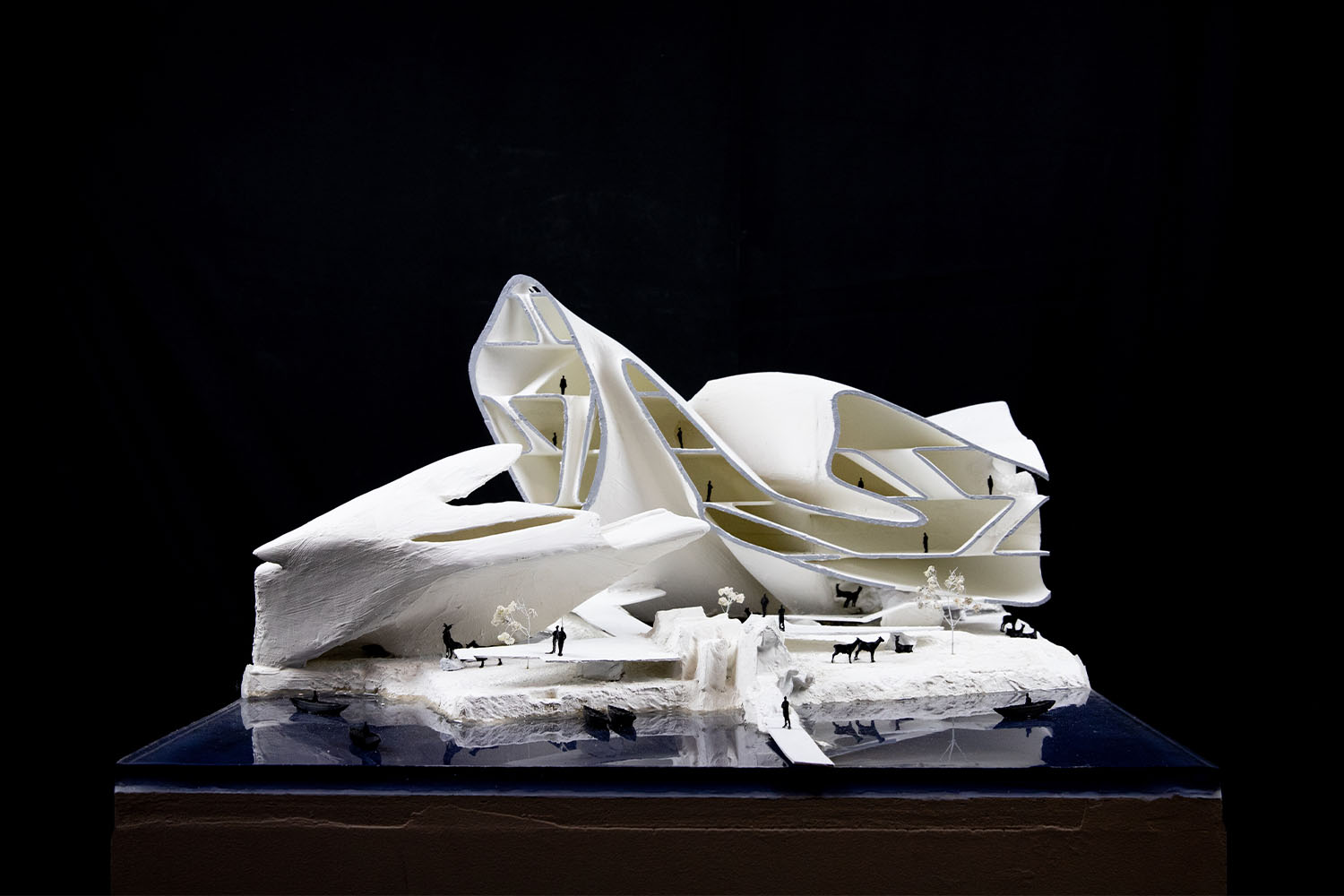
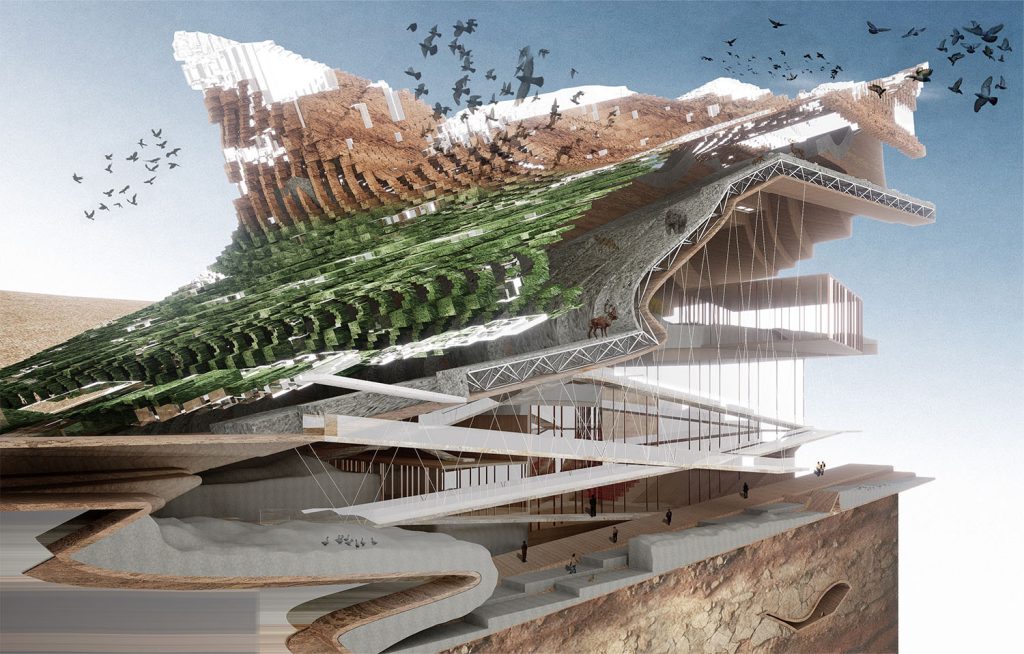
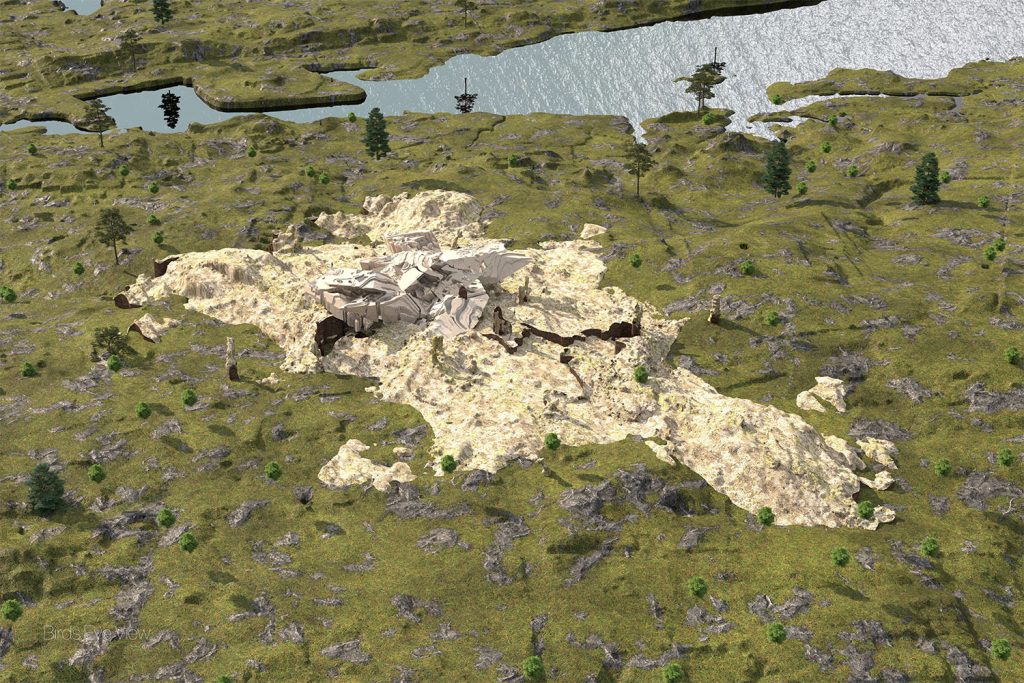
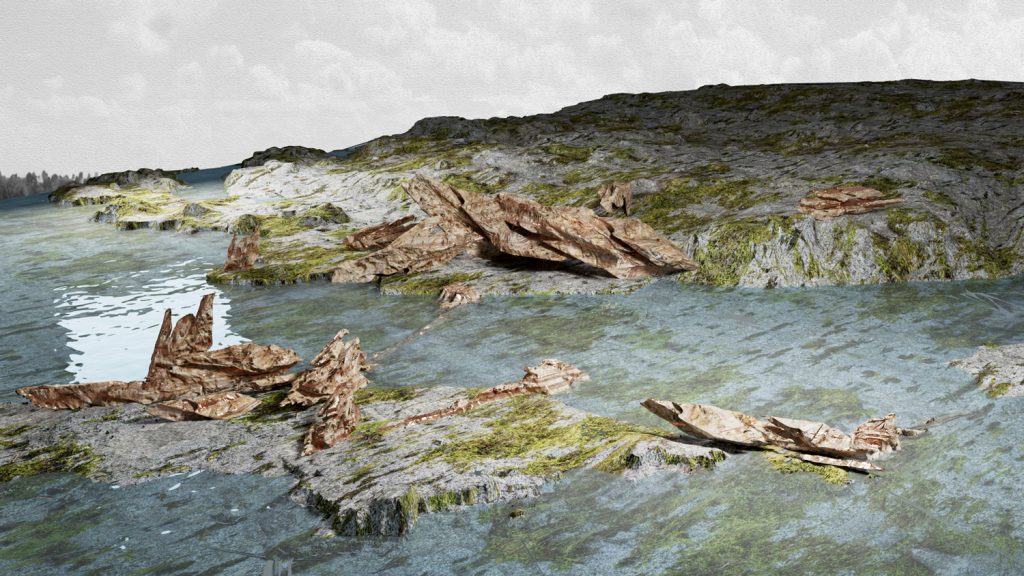
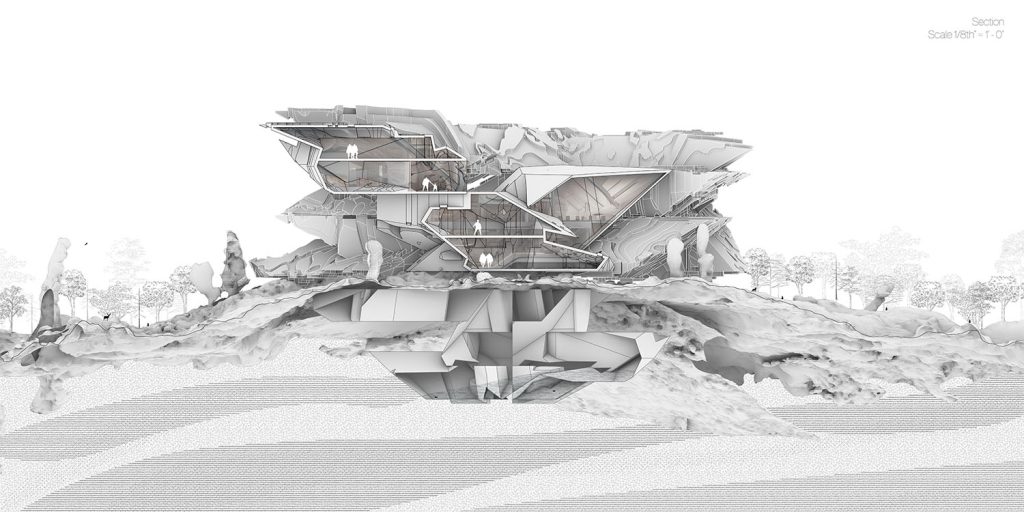

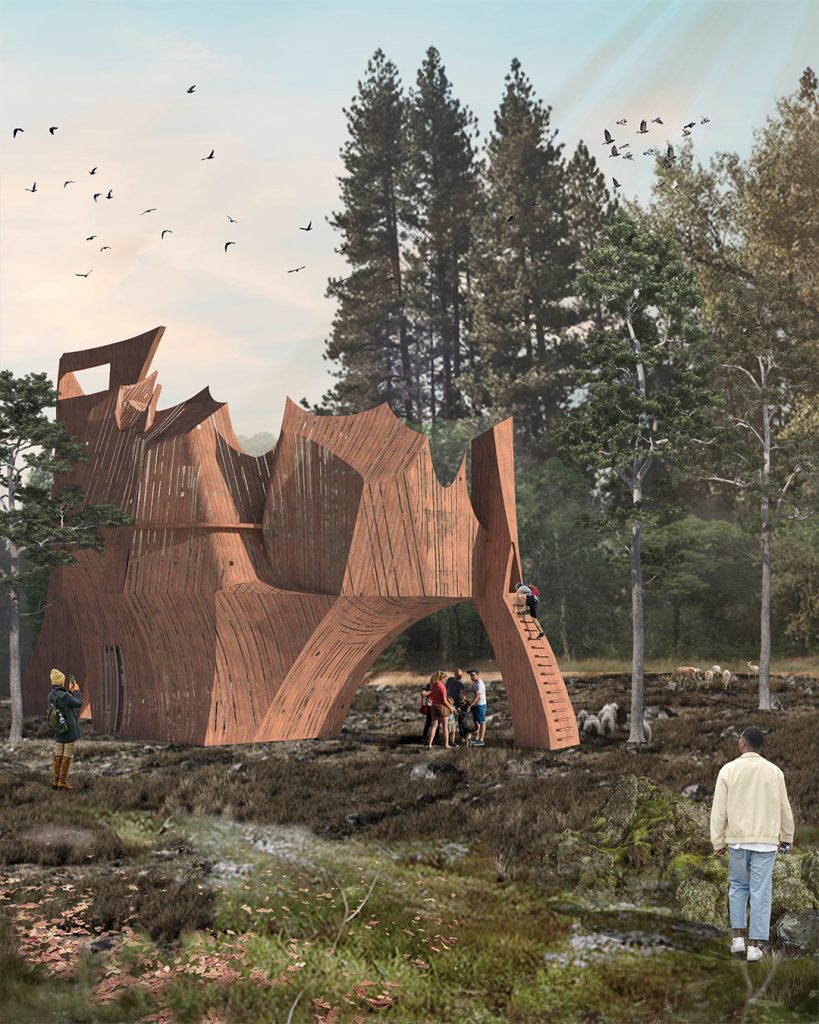
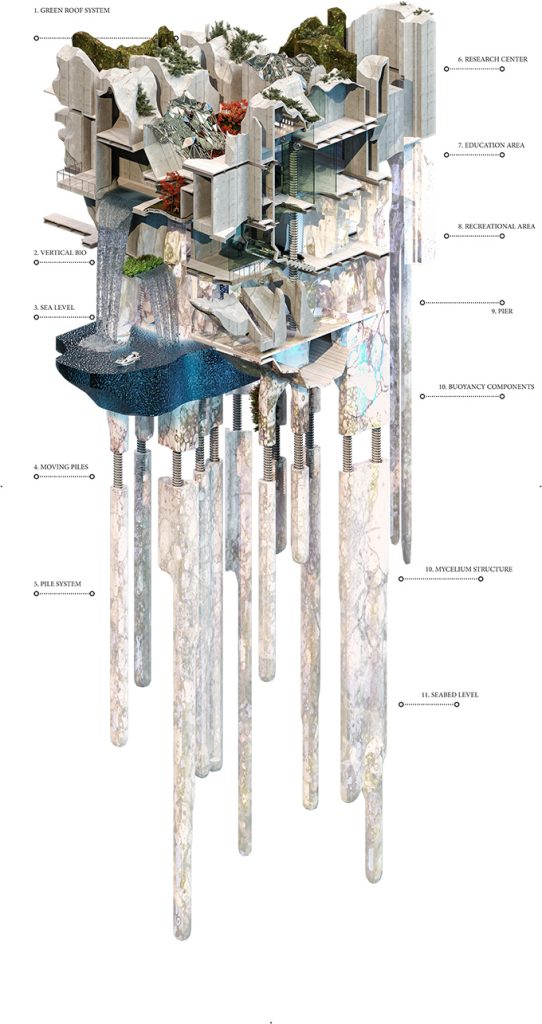














Leave a comment